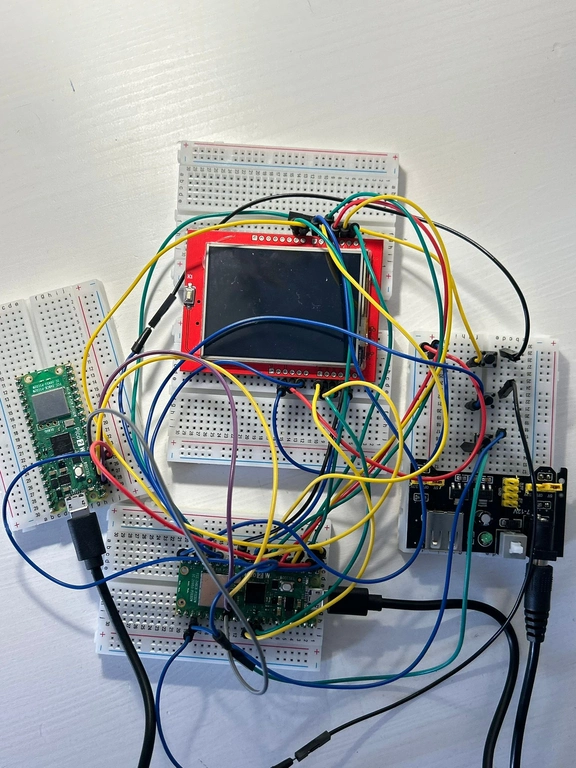Mood Tracker
An emotional journal based on button inputs for daily mood tracking and sentiment analysis.
Author: Constantinescu Patricia Miriam
GitHub Project Link: https://github.com/UPB-PMRust-Students/project-miriamct20
Description
A simple mood tracking device that allows users to record their daily emotional state by pressing buttons representing their mood state. The device saves these states and displays a graph of the last 7 days on a small LCD screen, providing a visual representation of emotional patterns so that the user can see his ups and downs.After the 7 inputs a mood analysis will be done based on the mix of emotions.
Future ideas : Implement the analysis via ChatGPT implementing it via its API and the wireless capability of Pico 2W.
Motivation
I chose this project because keeping track of one's emotional state can be beneficial for mental health awareness. A physical device with simple button inputs makes the process of mood tracking more tangible and accessible than smartphone apps, potentially encouraging more consistent usage. I'm also interested in creating a device that combines hardware interaction with data visualization.
Architecture
The main components of the system are:
-
Input Module: Buttons for mood selection (happy/sad/neutral)
-
Storage Module: EEPROM for persistent mood data storage(can be implemented for future storage capability for removing the need to be plugged nonstop)
-
Processing Unit: Raspberry Pi Pico 2W as the central controller
-
Display Module: LCD screen for visualization of mood data and analysis
These components interact as follows:
- User inputs mood via button presses
- The Processing Unit registers the input and stores it memory
- The Processing Unit processes data and generates visualization
- The Display Module shows the mood history graph
- The inputs determine a weekly analysis that will be shown below the graph
Log
Week 18 - 24 August
- Set up development environment
- Created initial project structure
- Polished the documentation
- Ordered the broken hardware
Week 25-31
- Finished software with some optimization (DRY) and created a static component for faster render after inputs
- Added a restart the process function
- Assembled hardware in final form
- Thought of some other features that can be implemented
Hardware

The project uses a Raspberry Pi Pico 2W as the main controller, with a 2.4" LCD screen for display and (optionally) an AT24C256 EEPROM module for data storage. Buttons for input and basic resistors are used for the interface.
Schematics
Bill of Materials
| Device | Usage | Price |
|---|---|---|
| 2X Raspberry Pi Pico 2W | Main microcontroller | 80 RON |
| 2.4" LCD Display | Displays mood history graph | 40 RON |
| AT24C256 EEPROM Module | Stores mood history data | 9 RON |
| 4 HQ830 Breadboard Kit | For prototyping | 88 RON |
| Push Buttons and Resistors | User input interface | 5 RON |
Software
| Library | Description | Usage |
|---|---|---|
| experimental LittleFS | File system for microcontrollers | Storage of mood data on the Pico |
| ST7789 | Display driver for LCD | Interfacing with the 2.4" LCD display |
| embedded-graphics | 2D graphics library | Creating the mood history graph |
| I2C-EEPROM | EEPROM interface library | Communication with the AT24C256 module |
| pico-sdk | Raspberry Pi Pico SDK | Core functionality for the Pico W |
| embedded-hal | Hardware abstraction layer | Consistent interface for hardware components |
